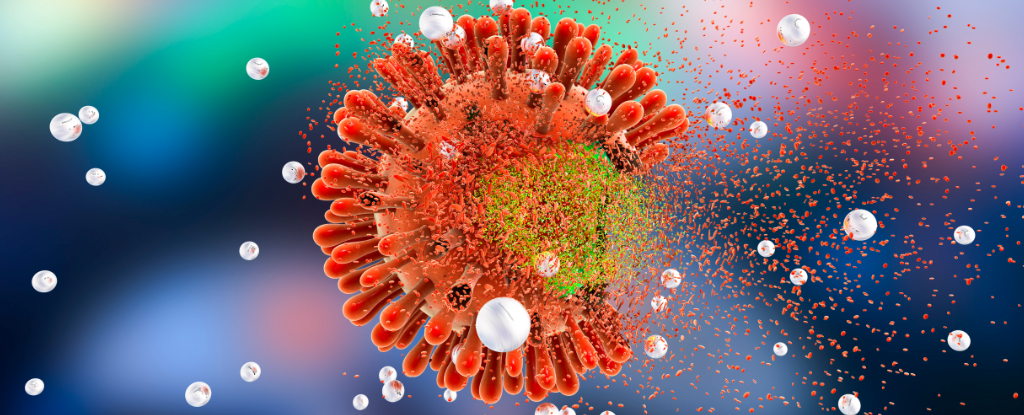ARTICLE AD
It’s unclear what, if any, exotic properties goldene has
Each gold atom in goldene (illustrated) is bonded to six other gold atoms in a layer just one atom thick.</p>
" data-image-description="" data-image-meta="{"aperture":"0","credit":"","camera":"","caption":"","created_timestamp":"0","copyright":"","focal_length":"0","iso":"0","shutter_speed":"0","title":"","orientation":"0"}" data-image-title="042224_sw_goldene_feat" data-large-file="https://i0.wp.com/www.sciencenews.org/wp-content/uploads/2024/04/042224_sw_goldene_feat.jpg?fit=800%2C450&ssl=1" data-medium-file="https://i0.wp.com/www.sciencenews.org/wp-content/uploads/2024/04/042224_sw_goldene_feat.jpg?fit=680%2C383&ssl=1" data-orig-file="https://i0.wp.com/www.sciencenews.org/wp-content/uploads/2024/04/042224_sw_goldene_feat.jpg?fit=1440%2C809&ssl=1" data-orig-size="1440,809" data-permalink="https://www.sciencenews.org/042224_sw_goldene_feat" decoding="async" height="580" sizes="(max-width: 1030px) 100vw, 1030px" src="https://i0.wp.com/www.sciencenews.org/wp-content/uploads/2024/04/042224_sw_goldene_feat.jpg?fit=1030%2C580&ssl=1" srcset="https://i0.wp.com/www.sciencenews.org/wp-content/uploads/2024/04/042224_sw_goldene_feat.jpg?w=1440&ssl=1 1440w, https://i0.wp.com/www.sciencenews.org/wp-content/uploads/2024/04/042224_sw_goldene_feat.jpg?resize=680%2C383&ssl=1 680w, https://i0.wp.com/www.sciencenews.org/wp-content/uploads/2024/04/042224_sw_goldene_feat.jpg?resize=800%2C450&ssl=1 800w, https://i0.wp.com/www.sciencenews.org/wp-content/uploads/2024/04/042224_sw_goldene_feat.jpg?resize=330%2C186&ssl=1 330w, https://i0.wp.com/www.sciencenews.org/wp-content/uploads/2024/04/042224_sw_goldene_feat.jpg?resize=768%2C431&ssl=1 768w, https://i0.wp.com/www.sciencenews.org/wp-content/uploads/2024/04/042224_sw_goldene_feat.jpg?resize=1030%2C580&ssl=1 1030w, https://i0.wp.com/www.sciencenews.org/wp-content/uploads/2024/04/042224_sw_goldene_feat.jpg?resize=1380%2C776&ssl=1 1380w" width="1030">
Each gold atom in goldene (illustrated) is bonded to six other gold atoms in a layer just one atom thick.
S. Kashiwaya et al/Nature Synthesis 2024
Meet graphene’s newest metallic cousin, goldene. For the first time, researchers have created a free-standing sheet of gold that’s just one atom thick.
The development, reported in the April 16 Nature Synthesis, could someday allow scientists to use less gold in electronics and chemical reactions, says materials physicist Lars Hultman of Linköping University in Sweden. The gold sheet may also exhibit exotic properties like those found in other two-dimensional materials (SN: 10/2/19).
Goldene holds promise as “a great catalyst because it’s much more economically viable” than thicker, three-dimensional gold, Hultman says. “You don’t need as many gold atoms to get the same function.”
Gold joins a rarefied group consisting of several elements, including carbon and phosphorus, that have been formulated into 2-D sheets (SN: 3/10/14). While two-dimensional sheets of nonmetal elements — such as carbon-based graphene — can be prepared with relative ease, making 2-D sheets with metals such as iron and gold is harder, Hultman says (SN: 1/17/18). In gold’s case, atoms tend to form clumps rather than flat sheets.
Hultman and colleagues first made a three-dimensional material called titanium gold carbide, whose structure contains two-dimensional sheets of gold. Then they etched off the surrounding material with a potassium-based solution, leaving goldene behind.
“The good news was that we were freeing goldene,” Hultman says. “The bad news was that as the goldene was freed, it started to curl up on itself like a scroll.” Keeping the goldene sheets flat required the team to add a surfactant to the etching solution in which the sheets floated.
The team hopes to apply a similar etching strategy to make 2-D sheets of other metals like iridium and platinum, says coauthor Shun Kashiwaya, a materials scientist at Linköping University.

 6 months ago
54
6 months ago
54 

